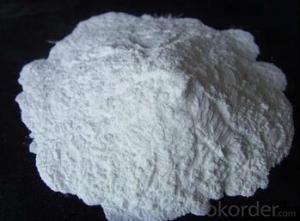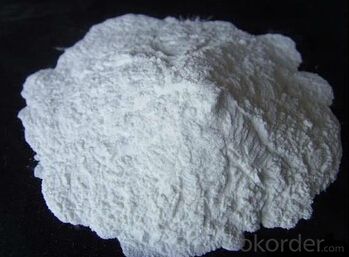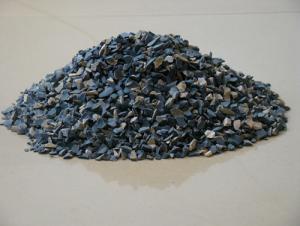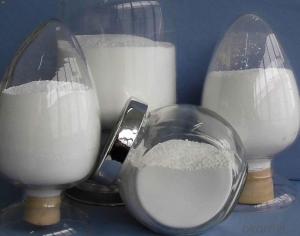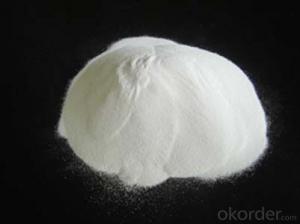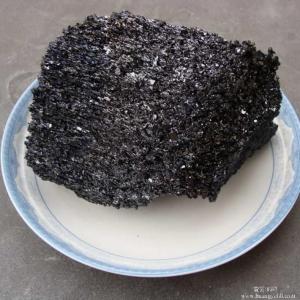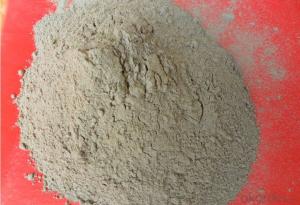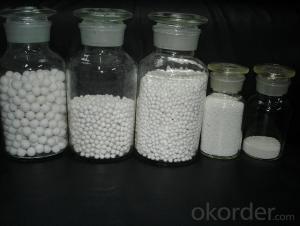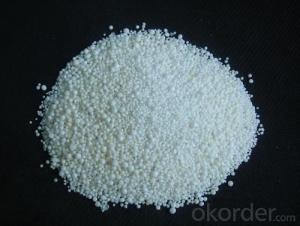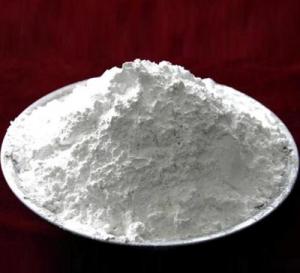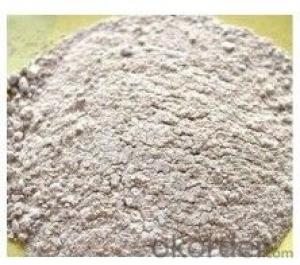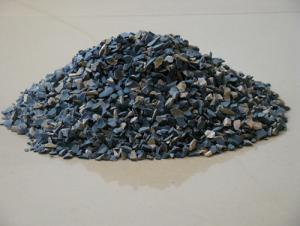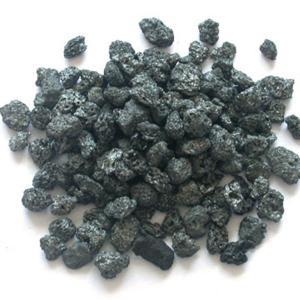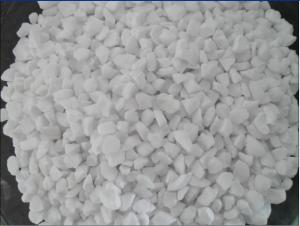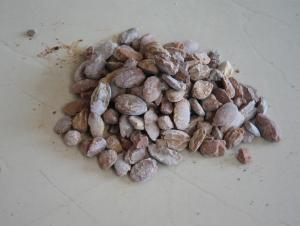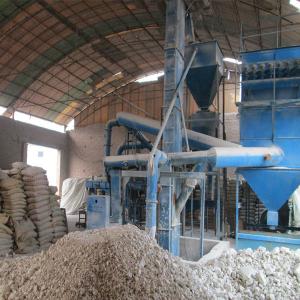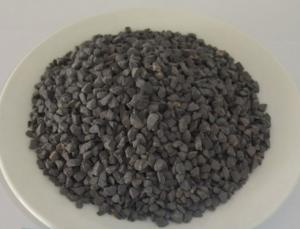Raw Materials for Refractory:Calcined Alumina Refractory Powder
- Loading Port:
- China Main Port
- Payment Terms:
- TT OR LC
- Min Order Qty:
- -
- Supply Capability:
- -
OKorder Service Pledge
OKorder Financial Service
You Might Also Like
Specifications
1.heat resistant
2,material origin: alumina from Australia
3, produced as per general international law of Bayer
4,ISO, SGS.
Product Description:
Taking the superior industrial alumina as raw material, Calcined Alumina is produced through the method of advanced high temperature down draught kiln with scientific calcine. These make sure it has the advantages as follows: less trash, high transfer rate, stable contraction, and great variety of goods. The shape is fine sand or powdery with white color, As its equal particle sizes and dispersing easily, it has a good sinterability. Calcined Alumina is the basic raw material for heat-resistance and corrosion-resistance products, such as high-alumina refractory, high level ceramic products, car used sparking plug, electronic ceramic parts, material for iron and steel oven, high temperature friction material and polishing grinding products, ect.
Calcined Alumina Parameters
| Application | Model | Al2O3 | Na2O | Fe2O3 | SiO2 | TiO2 | LOI | True Density | a-Al2O3 | D50 | Particle Size | Specific Surface |
| Unit | ≥ % | ≤% | ≤% | ≤% | ≤% | ≤% | g/m3 | ≥ % | um | um | m2/g | |
| Dry pressing/CIP series | TCH-101 | 99.7 | 0.08 | 0.02 | 0.018 | 0.006 | 0.15 | 3.96 | 96 | 75 | 2--3 | 0.6-0.8 |
| TCH-102 | 99.6 | 0.1 | 0.02 | 0.018 | 0.006 | 0.15 | 3.95 | 95 | 75 | 2--3 | 0.6-0.8 | |
| TCH-103 | 99.5 | 0.2 | 0.02 | 0.018 | 0.006 | 0.2 | 3.95 | 95 | 75 | 2--3 | 0.8-1.0 | |
| TCH-105 | 99.4 | 0.3 | 0.02 | 0.018 | 0.006 | 0.2 | 3.93 | 93 | 75 | 2--3 | 0.8-1.0 | |
| Injection moulding | TCH-213 | 99.5 | 0.15 | 0.02 | 0.018 | 0.006 | 0.15 | 3.95 | 95 | 75 | 3--4 | 0.5-0.6 |
| TCH-211 | 99.7 | 0.1 | 0.02 | 0.018 | 0.006 | 0.1 | 3.96 | 96 | 75 | 3--5 | 0.5-0.6 | |
| Refractory series | TCH-31 | 99.4 | 0.3 | 0.02 | 0.018 | 0.006 | 0.15 | 3.92 | 90 | 75 | 2--3 | 0.1-0.8 |
| TCH-30 | 99.5 | 0.25 | 0.02 | 0.019 | 0.008 | 0.1 | 3.95 | 95 | 3 | 2--4 | 1.0-1.2 | |
| TCH-33 | 99.4 | 0.3 | 0.02 | 0.018 | 0.006 | 0.15 | 3.95 | 95 | 43 | 2--3 | 0.9-1.0 | |
| TCH-003 | 99.4 | 0.3 | 0.02 | 0.018 | 0.006 | 0.13 | 3.95 | 95 | 4 | 3--5 | 1.0-1.2 | |
| TCH-35 | 99 | 0.3 | 0.02 | 0.02 | 0.006 | 0.2 | 3.9 | 90 | 43 | 3--5 | 0.9-1.0 | |
| Active A-Al2o3 | TCH-5H | 98.8 | 0.15 | 0.02 | 0.15 | 3.95 | 95 | 1 | ||||
| TCH-5L | 98.6 | 0.15 | 0.02 | 0.15 | 3.93 | 93 | 0.8 | |||||
| Polishing series | TCH-61 | 97 | 0.1 | 0.1-0.2 | 0.18-2 | 3.95 | 95 | 40-60 | ||||
| TCH-62 | 97 | 0.1 | 0.1-0.2 | 0.18-2 | 3.95 | 95 | 4--5 | |||||
| TCH-63 | 98 | 0.1 | 0.05-0.6 | 0.18-0.2 | 3.97 | 95 | 4--5 | |||||
| Glazing series | TCH-7 | 99.6 | 0.2 | 0.02 | 0.018 | 3.95 | 95 | 55 | ||||
| TCH-703 | 99.6 | 0.2 | 0.02 | 0.018 | 3.95 | 95 | 15 | |||||
| TCH-713 | 99.6 | 0.2 | 0.02 | 0.018 | 3.95 | 95 | 4 |
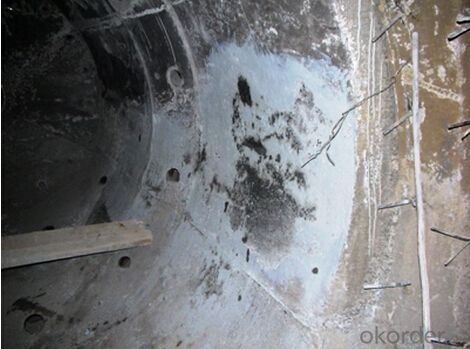
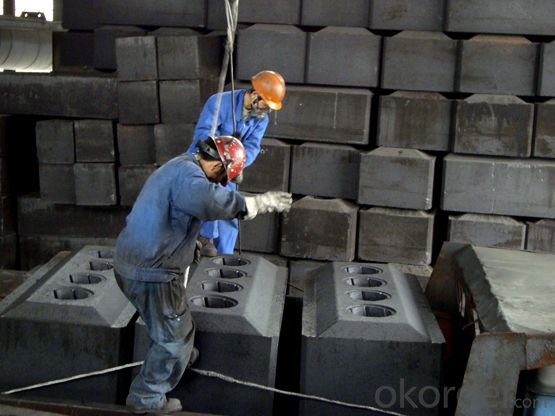
- Q: How to divide the fire resistant level of EVB?
- According to the indicators of amount of smoke, heat value, burning rate, and ignition point, combustion performance insulation materials are divided into A (non-combustible), B1 (flame retardant), B2 (flammable), B3 (combustible). It can be divided into the organic and inorganic types: The organic includes polyurethane and polystyrene board, the inorganic the includes glass wool and rock wool. The price of organic is lower, and it is combustible materials, it will produce hydrogen cyanide and other toxic gases when burned, the inhaled would die. The inorganic material is completely non-combustible insulation material.
- Q: What problems should be paid attention to while using refractory materials under a controlled atmosphere?
- Pay attention to the performance of the materials, and the use of non oxide materials!
- Q: Which industry does refractory belong to?
- It belongs to construction industry.
- Q: What a blast furnace refractories generally?
- Common refractories often use silica?brick, semi-silica brick, fireclay brick, high alumina brick, magnesia brick, etc. special materials often used are AZS brick, corundum brick, directly bonded magnesia-chrome brick, carborundum brick, silicon nitride bonded silicon carbide bricks, nitrides, silicides, sulfides, borides, carbides and other non-oxide refractory materials; calcium oxide, chromium oxide, aluminum oxide, magnesium oxide, beryllium oxide refractory insulating refractory frequently used. material diatomite products, asbestos products, insulation boards. monolithic refractories have fettling frequently used, refractory ramming mixes, refractory castable, fire-resistant plastic, refractory clay, refractory gunning refractory projection material, refractory coatings, lightweight refractory castable, stemming etc.
- Q: Can refractory be used as sealing element?
- It can. For example, fiber ceramics can resist high temperature! !
- Q: What are the advantages and disadvantages of new external wall fireproof and thermal inuslation matertials?
- The new external wall fireproof and thermal inuslation matertials have both the advantages and disadvantages. Advantages: 1)Low requirements on the waterproof, weather resistance and other technical indicators. The dry wall and gypsum plastering mortar, etc. can meet the requirements and can be easily obtained; 2) The inner insulation material are separated by the floor, and construct within a height of only a storey , without erecting scaffold ; 3) In the hot summer and cold winter or hot summer and warm winter area, the inner insulation meets the requirements; 4) The glass beads overcome the shortcomings of expanded perlite, like, large amount water absorption, easy powdering, big volumetric shrinkage in the slurry mixing process, easily leading to post-insulation product performance degradation and hollowing, cracking, and also make up for the defects of polystyrene particles organic materials, like, flammable, poor fire performance, producing harmful gas at high temperatures and anti-aging, poor weather resistance, poor workability and large rebound in construction, ect. Disadvantages of external wall insulation : 1) Since the ring beam, slab and column structure would cause thermal bridges, leading a greater heat loss; 2) It is of low intensity, high water absorption, easy to shrink and crack. The insulation system is prone to cracking, leaking or loss and other common quality problems, especially it is easy to crack at the seams, thus being difficult to exsit as long as the building. 3) It is inconvenient for the users to redecorate and hang ornaments; 4) It takes up indoor used space;
- Q: Introduction to refractory material
- The best way to learn is on-site contact. If for produing purpose, it is better to ask teh leader of a plant. If for application, go to steel mill (cement plant, glassworks, etc.) to learn and look up information. Theory alone is of no help.
- Q: What are the new refractories?
- The zirconium oxide produced in Gao Ha in Zibo can reach 2500 degrees.
- Q: What kind of refractory material should be used for common boiler?
- Build by using clay refractory mortar. Common clay brick is used as combustion layer. Xindeyuan Refractory Material, red?brick is used as external wall. Light clay brick is used as thermal insulation layer, thank you.
Send your message to us
Raw Materials for Refractory:Calcined Alumina Refractory Powder
- Loading Port:
- China Main Port
- Payment Terms:
- TT OR LC
- Min Order Qty:
- -
- Supply Capability:
- -
OKorder Service Pledge
OKorder Financial Service
Similar products
Hot products
Hot Searches
Related keywords
